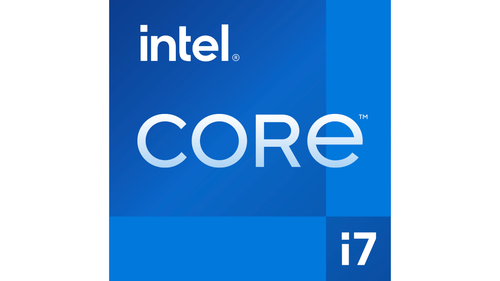
Intel® Gaussian & Neural Accelerator
Intel® Gaussian & Neural Accelerator (GNA) is an ultra-low power accelerator block designed to run audio and speed-centric AI workloads. Intel® GNA is designed to run audio based neural networks at ultra-low power, while simultaneously relieving the CPU of this workload.
Intel® Deep Learning Boost (Intel® DL Boost)
A new set of embedded processor technologies designed to accelerate AI deep learning use cases. It extends Intel AVX-512 with a new Vector Neural Network Instruction (VNNI) that significantly increases deep learning inference performance over previous generations.
Intel® Deep Learning Boost (Intel® DL Boost)
A new set of embedded processor technologies designed to accelerate AI deep learning use cases. It extends Intel AVX-512 with a new Vector Neural Network Instruction (VNNI) that significantly increases deep learning inference performance over previous generations.
Intel® Speed Shift Technology
Intel® Speed Shift Technology uses hardware-controlled P-states to deliver dramatically quicker responsiveness with single-threaded, transient (short duration) workloads, such as web browsing, by allowing the processor to more quickly select its best operating frequency and voltage for optimal performance and power efficiency.
Intel® Turbo Boost Max Technology 3.0
Intel® Turbo Boost Max Technology 3.0 identifies the best performing core(s) on a processor and provides increased performance on those cores through increasing frequency as needed by taking advantage of power and thermal headroom.
Idle States
Idle States (C-states) are used to save power when the processor is idle. C0 is the operational state, meaning that the CPU is doing useful work. C1 is the first idle state, C2 the second, and so on, where more power saving actions are taken for numerically higher C-states.
Intel® Volume Management Device (VMD)
Intel® Volume Management Device (VMD) provides a common, robust method of hot plug and LED management for NVMe-based solid state drives.
Intel® AES New Instructions
Intel® AES New Instructions (Intel® AES-NI) are a set of instructions that enable fast and secure data encryption and decryption. AES-NI are valuable for a wide range of cryptographic applications, for example: applications that perform bulk encryption/decryption, authentication, random number generation, and authenticated encryption.
| Processor package size | 45 x 37.5 mm |
|---|---|
| Status | Launched |
| Launch date | Q1'23 |
| Target market | Gaming, Content Creation |
| Intel® Gaussian & Neural Accelerator (Intel® GNA) 3.0 | Yes |
| Intel® AES New Instructions (Intel® AES-NI) | Yes |
| Intel® Secure Key | Yes |
| Enhanced Intel SpeedStep Technology | Yes |
| Intel 64 | Yes |
| Intel® Turbo Boost Technology | 2.0 |
| Intel® Speed Shift Technology | Yes |
| Intel Virtualization Technology (VT-x) | Yes |
| Intel® Standard Manageability (ISM) | Yes |
| Intel® Boot Guard | Yes |
| Mode-based Execute Control (MBE) | Yes |
| Intel® Thread Director | Yes |
| Intel® Deep Learning Boost (Intel® DL Boost) | Yes |
| Intel® OS Guard | Yes |
| Intel Turbo Boost Max Technology 3.0 | Yes |
| Intel® Turbo Boost Max Technology 3.0 frequency | 5.2 GHz |
| Intel® Control-flow Enforcement Technology (CET) | Yes |
| Intel® Hyper Threading Technology (Intel® HT Technology) | Yes |
| Intel® Volume Management Device (VMD) | Yes |
| Intel VT-x with Extended Page Tables (EPT) | Yes |
| Intel Virtualization Technology for Directed I/O (VT-d) | Yes |
| Processor cache | 30 MB |
| Processor socket | LGA 1700 |
| Performance-core base frequency | 2.1 GHz |
| Bus type | DMI4 |
| Processor family | Intel® Core™ i7 |
| Processor manufacturer | Intel |
| Efficient cores | 8 |
| Cooler included | Yes |
| Processor generation | 13th gen Intel® Core™ i7 |
| Processor boost frequency | 5.2 GHz |
| Processor base power | 65 W |
| Processor operating modes | 64-bit |
| Processor cache type | Smart Cache |
| Processor ARK ID | 230491 |
| Performance cores | 8 |
| Box | Yes |
| Processor cores | 16 |
| Efficient-core boost frequency | 4.1 GHz |
| Maximum number of DMI lanes | 8 |
| Maximum turbo power | 219 W |
| Performance-core boost frequency | 5.1 GHz |
| Processor model | i7-13700F |
| Processor threads | 24 |
| Efficient-core base frequency | 1.5 GHz |
| Memory bandwidth supported by processor (max) | 89.6 GB/s |
| Processor codename | Raptor Lake |
| Package type | Retail box |
| L2 cache | 24576 KB |
| Maximum internal memory | 192 GB |
| Tjunction | 100 °C |
| Non-ECC | Yes |
| Maximum internal memory supported by processor | 192 GB |
| Memory types supported by processor | DDR4-SDRAM, DDR5-SDRAM |
| Memory bandwidth (max) | 89.6 GB/s |
| Memory channels | Dual-channel |
| Harmonized System (HS) code | 8542310001 |
| Discrete graphics card | No |
| Discrete graphics card model | Not available |
| On-board graphics card model | Not available |
| On-board graphics card | No |
| CPU configuration (max) | 1 |
| Idle States | Yes |
| Export Control Classification Number (ECCN) | 5A992C |
| Use conditions | PC/Client/Tablet |
| PCI Express slots version | 5.0, 4.0 |
| Commodity Classification Automated Tracking System (CCATS) | 740.17B1 |
| Maximum number of PCI Express lanes | 20 |
| Market segment | Desktop |
| PCI Express configurations | 1×16+1×4, 2×8+1×4 |
| Scalability | 1S |
| Supported instruction sets | SSE4.1, SSE4.2, AVX 2.0 |
| Execute Disable Bit | Yes |
| Direct Media Interface (DMI) Revision | 4.0 |
| Embedded options available | No |
| Thermal Monitoring Technologies | Yes |
Reviews